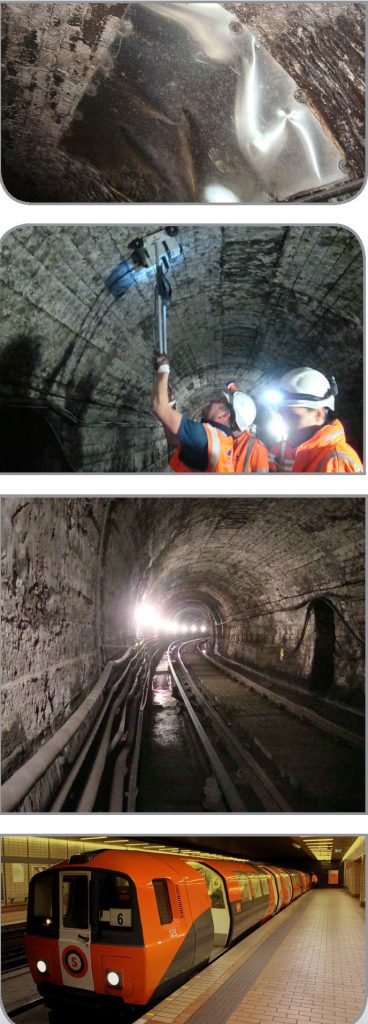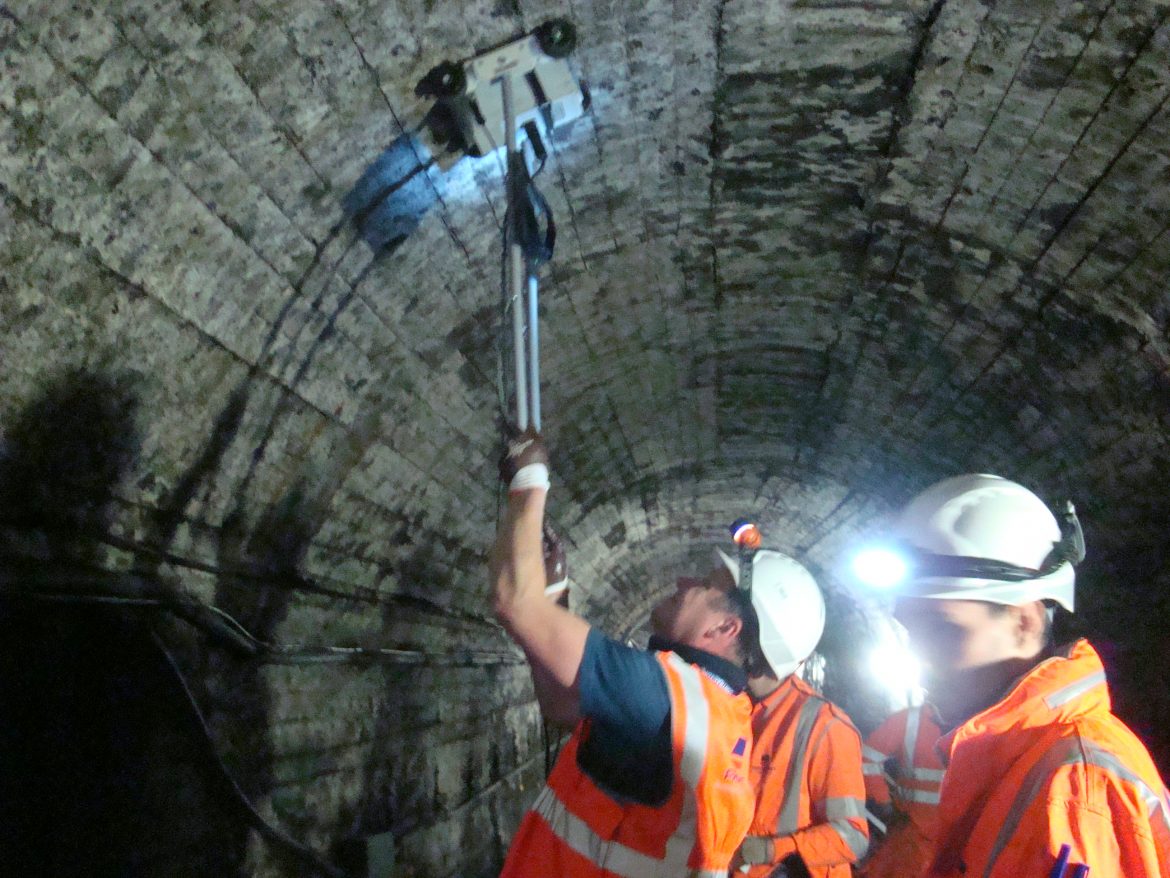 Leak Sealing and Tunnel Lining Repairs
Leak Sealing and Tunnel Lining Repairs
Client
Strathclyde Partnership for Transport
Principal Contractor
Freyssinet Ltd
Principal Designer
Freyssinet Ltd
Contract Duration
2 years
Work Commenced
April 2015
The Glasgow Subway is an underground railway dating from 1896, making it the third oldest underground railway in the world, after London and Budapest. It comprises of two tunnels, a clockwise Outer Circle and an anti-clockwise Inner Circle, each 10km long. The form of construction varies depending on soil type, depth below surface and proximity to rivers and includes; brick horseshoe, concrete horseshoe, brick and concrete circular and cast iron types.
Strathclyde Partnership for Transport (SPT) awarded Freyssinet a £17 million contract to upgrade the network’s tunnel lining, as part of the subway’s £300 million modernisation project.
The bulk of the repairs are being undertaken in tunnels running between Hillhead and Buchanan Street stations in the city centre, a stretch which also incorporates Kelvinbridge, St George’s Cross and Cowcaddens stations. Another high priority is a section on the south side of Glasgow between Shields Road and Kinning Park. These ‘high priority’ areas total 8,019 linear metres of tunnel and the works that Freyssinet will execute include:
- Cleaning of the tunnel lining, track bed, slip and drainage channel.
- Investigation and assessment of the condition of the lining, including removal of steel drip sheets.
- Recording of data onto ScanPrint tablet-based data management tool.
- Probe hole investigations to determine the thickness of the tunnel lining and the presence and extent of voids behind it. Approximately 5,500 number 50mm diameter probe holes are required.
- Design of the necessary repairs.
- Annulus grouting with cement grout, requiring approximately 3,000m3 of grout and 46,000 number 32mm diameter injection holes.
- Convergence monitoring between five reference points around the tunnel circumference to verify there is no unexpected movement of the lining during critical works.
- Concrete lining repair works comprising; hand-placed concrete patch repairs and up to 2,700m2 of sprayed concrete repairs.
- Brickwork lining repairs comprising; brick replacement, stainless steel pinning and up to 1,600m2 of re-pointing.
- Resin injection leak-sealing of brick and concrete linings requiring an estimated 17,000 injection holes and 9,000 litres of resin.
- Installation of weep pipes to manage ingress of water.
- Re-caulking of cast iron joints.
- Track bed repair works to seal cracks and prevent ingress of water and silts.
There are additional works to be done in the ‘medium priority’ areas, which total 6,672 linear metres. These works include cleaning of the lining followed by investigation and assessment of its condition to allow prioritisation of subsequent phases of work. SPT wanted to avoid a full-scale shut down of the tunnels, choosing to do the works during the night-time closures from 00:30 to 05:00 over a two year period. The labour force averages at about 80 but at the peak in operations Freyssinet expects to bring 130 people into the tunnels.

